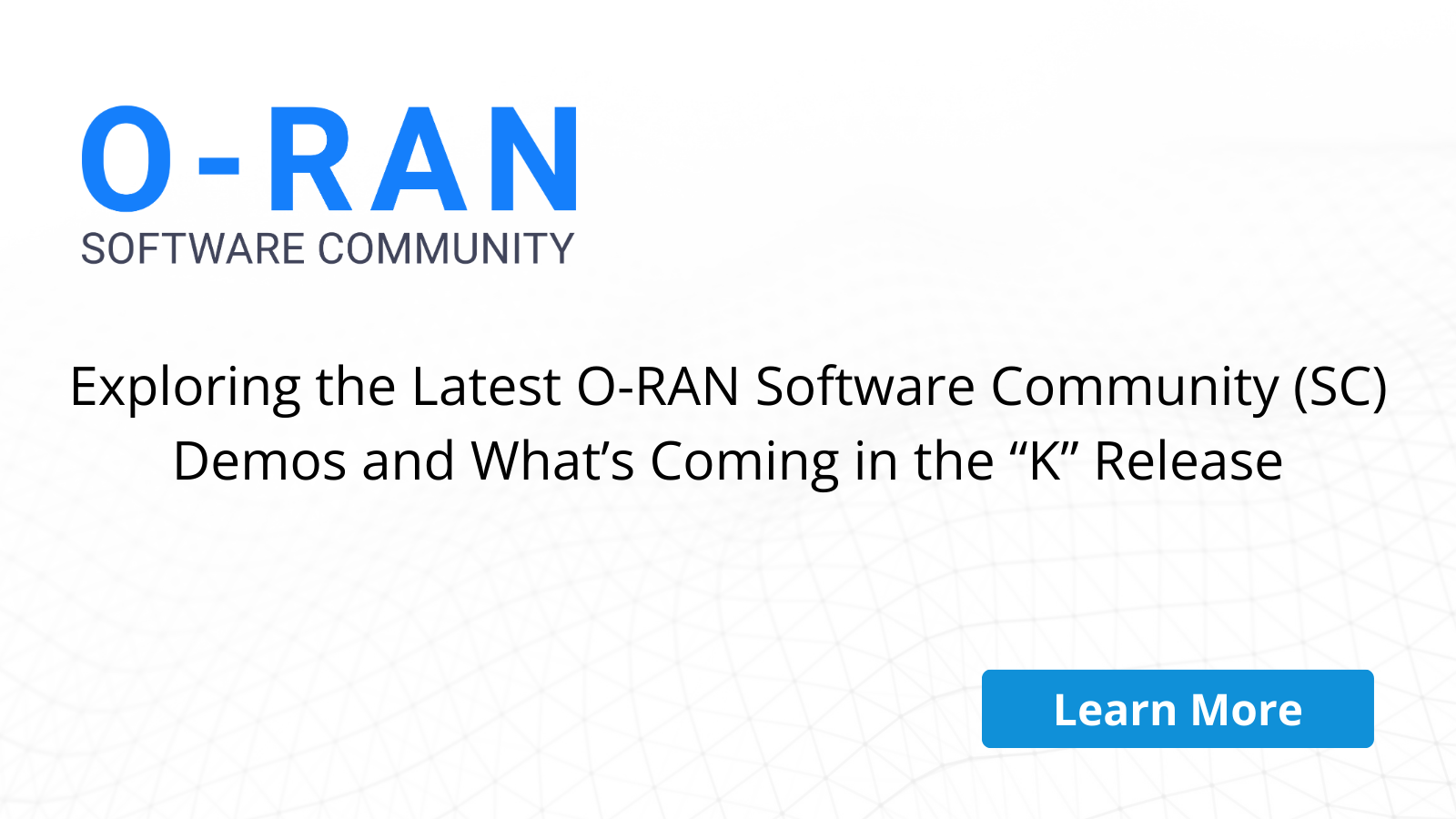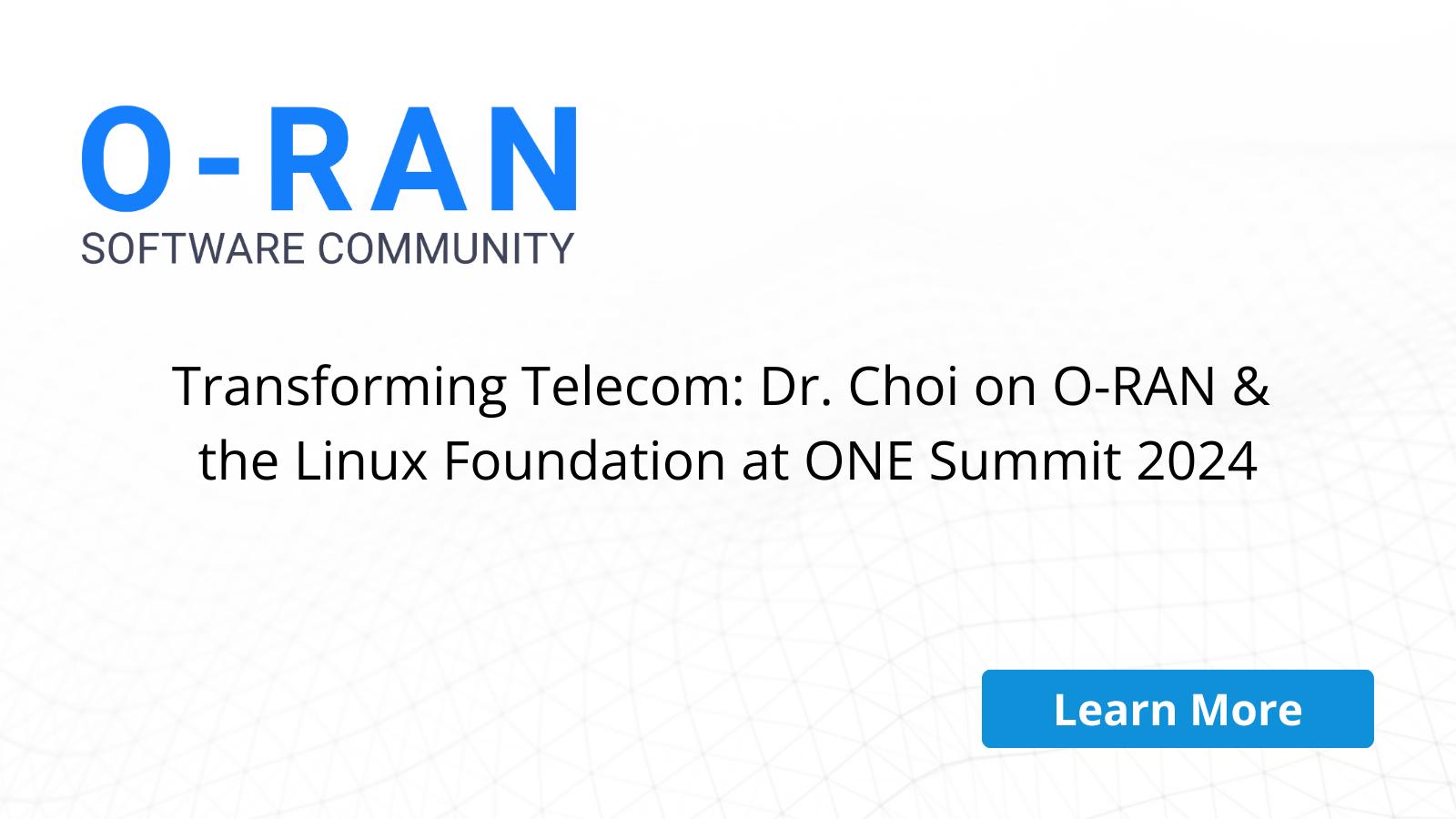
The O-RAN Software Community (SC) recently gathered in Montreal on October 30-31, 2024, to showcase the latest innovations driving open RAN forward. With sessions focused on multi-architecture support, AI integration, and scalable management, these demos provided a firsthand look at the future of telecommunications. Here’s a recap of the key moments from each day. Don’t miss the full recordings and stay tuned for the upcoming “K” release!
Day 1 Highlights: Flexible, Scalable, and Intelligent Network Innovations
The Multi-Arch Support on O-Cloud (O2) demo, presented via video by Jackie Huang from Windriver, introduced O-Cloud’s compatibility with both ARM and x86 architectures. This update, part of the “K” release, allows diverse hardware integration, advancing flexibility in open RAN deployment.
Topology Exposure & Inventory ((TE&IV): Intro & Demo), presented by John Keeney of Ericsson, focused on a streamlined approach to network topology management. TEIV’s abstracted model makes it easier for operators to access and control topology data. The goal is to drive this forward as a collaborative engagement.
INDIGO – Intelligent xG Networks Designed and Integrated for Global Operations, led by Brenda Connor from Ericsson and Martin Skorupski from Highstreet Technologies, showcased AI-powered xG networks designed for global scalability and resilience. The demo illustrated how INDIGO’s automation supports critical applications like disaster recovery, ensuring network adaptability in real-time.
Day 2, Part 1 Highlights: Energy Efficiency and Fault Management in O-RAN
The first demo of the day, led by Bimo Fransiscus Asisi from NTUST, showcased Integrating OSC Components Cell Switch On/Off. This innovative approach leverages real-time data on cell load to dynamically turn off microcells during low-demand periods, helping reduce power consumption. The demo walked through the process, illustrating how traffic is handed over before cells are turned off, ensuring seamless network operation.
Next, O-RAN SMO ETSi profile FM and PM data monitoring was presented by Toshiaki Takahashi from the OpenStack community. This session demonstrated how O-RAN components manage network health by monitoring and responding to faults and performance metrics. Through Tacker, a tool integrating OpenStack and Kubernetes, the demo showed how fault alerts and performance data are managed and displayed, helping operators make timely adjustments to maintain service quality.
These sessions reflect O-RAN’s commitment to efficient, resilient network management.
Watch the Day 2 Recording (Part 1)
Day 2, Part 2 Highlights: O-RAN User Experience, Network Management, and Collaboration
Sridhar Rao from O-RAN SC and The Linux Foundation shared insights from India’s Open Source Mobile Communication Network (IOS MCN) project. The project aims to simplify open source integrations for startups. Sridhar’s demo focused on OAM (Operations, Administration, and Maintenance) and RAN performance, showcasing the integration of gNodeB, UE, and OAM dashboards using O-RAN SC solutions.
John Keeney from Ericsson presented work on the non-RT RIC project, demonstrating the functionality of rApps. He showed a simulated network where rApps created and updated A1 policies based on data flow, offering a ‘Hello World’ example of rApp integration within the O-RAN architecture. This sample provided a foundational model for those developing rApps.
Subhash Kumar Singh from Samsung and John Keeney from Ericsson discussed AI/ML in the context of O-RAN SC detailing its components, including training services, model management, and inference capabilities. They demonstrated how AI/ML uses performance metrics to create predictive models, which are then deployed as rApps to optimize network resources dynamically.
In Hybrid and Hierarchical OAM Architecture, Alex Stancu from Highstreet Technologies showcased a flexible OAM setup supporting both hierarchical and hybrid Radio Units (RUs). They demonstrated how hierarchical RUs communicate solely through ODUs, while hybrid RUs connect with both the SMO and ODU for real-time monitoring and enhanced control. Using Kafka notifications and role-based permissions, their approach enables tailored access and streamlined network management across diverse OAM environments.
Finally, Shashikanth Reddy from Samsung provided a demo on deploying O-Cloud from bare metal using the O-Cloud Operator. The deployment process included OS installation, Kubernetes setup, and Focom integration for centralized management, showcasing how O-Clouds can be efficiently deployed, managed, and monitored within the O-RAN ecosystem.
Watch the Day 2 Recording (Part 2)
Looking Ahead: The “K” Release and What’s Next for O-RAN SC
The Montreal sessions underscored O-RAN SC’s commitment to building intelligent, flexible, and open networks. With the “K” release on the way, expect even more innovative tools that will continue shaping the telecommunications landscape. Follow O-RAN SC on LinkedIn for updates and future demo events!

